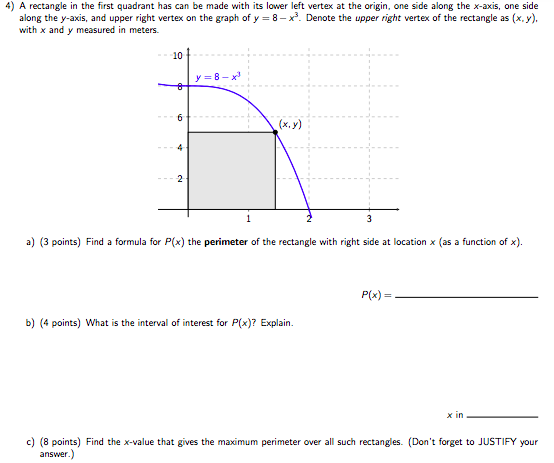A rectangle in the first quadrant has can be made with its lower left vertex at the origin, one side along the x-axis, one side along the y-axis, and upper right vertex on the graph of y = 8−x3. Denote the upper right vertex of the rectangle as (x, y), with x and y measured in meters. a) (3 points) Find a formula for P(x) the perimeter of the rectangle with right side at location x (as a function of x). P(x) = b) (4 points) What is the interval of interest for P(x)? Explain. x in c) (8 points) Find the x-value that gives the maximum perimeter over all such rectangles. (Don't forget to JUSTIFY your answer.)
